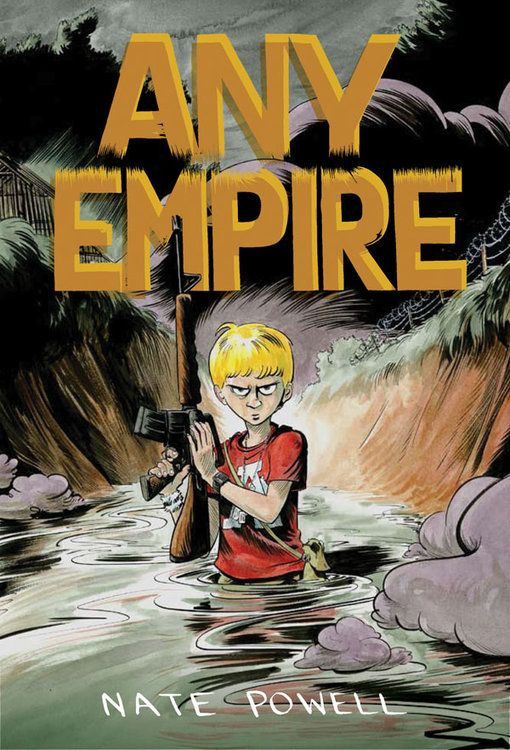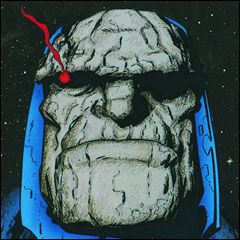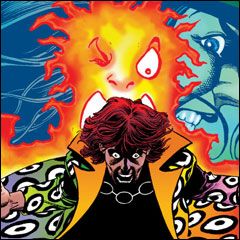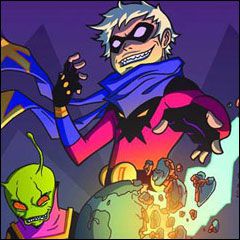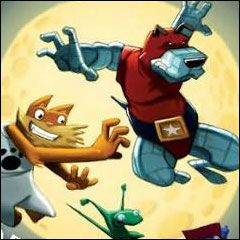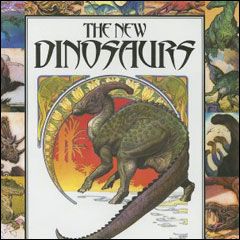Welcome to another edition of What Are You Reading? This week our special guest is Robert Stanley Martin.
Robert writes for his blog Pol Culture, and is a contributing writer to The Hooded Utilitarian. He is a past contributor to The Comics Journal, and his essays on R. Crumb’s The Book of Genesis Illustrated and Eddie Campbell’s Alec: The Years Have Pants are featured in the soon-to-be-released The Comics Journal #301.
To see what Robert and the Robot 6 crew have been reading, click on through ...
*****
Tom Bondurant
This week, some unplanned, unexpected free time gave me the opportunity to read the new edition of Legion of Super-Heroes: The Great Darkness Saga. Now, I have been an on-again, off-again Legion fan throughout the years, reading the book sporadically in the '70s and '80s, and pretty steadily in the '90s, and am slowly catching up with the original stories via Showcase Presents. I read "GDS" originally in its 1989 paperback edition, which reprinted only the particular issues themselves (#s 290-94) and the epilogue revealing Darkseid's subtle revenge. I thought it was a good adventure story, and certainly a good blend of the Legion with the Fourth World. The new hardcover reprints a lot more material -- issues #284-96, plus Annual #1 -- but that pushes "GDS" itself into the last half of the book, with not a lot of buildup in the first half. Thus, as I was reading, I kept wondering what Chameleon Boy's mission to Khundia, Princess Projectra's political intrigue, or the new Invisible Kid, had to do with the fireworks to come. The answer, I think, is "not a lot," at least in story terms. Those plots and subplots are, at most, background for where we find those characters in "GDS." Perhaps more importantly, though, the non-"GDS" issues seem like a pretty good sample of early-'80s Legion comics: multiple interweaving plots, the needs of a huge cast (and some significant supporting characters), and of course healthy doses of superhero space opera. Overall I think the collection works pretty well, as long as you don't expect to see the Fourth Worlders too early on.
Since it was the first week of the Flashpoint onslaught, naturally I picked up FP #2, plus the first issues of Batman: Knight of Vengeance and Secret Seven. Honestly, I could see B:KOV working just as well as a garden-variety Elseworlds, at least at this point. It's as moody as you'd expect from Brian Azzarello and Eduardo Risso, although the Thomas Wayne here is a lot more beefy (and Miller/Janson-esque) than the one in FP Proper. It's also about what you'd expect from a Batman Elseworlds: familiar faces in unfamiliar roles, including the Penguin working for Wayne Casinos and Gordon as the Alfred-esque confidant. It's pretty violent, too: there's some cannibalism, and an injury-to-the-eye scene just for good measure. Otherwise, it's a pretty noirish, entertaining Batman story.
Secret Seven I am less enthused about, which is too bad, because I am a fan of both Peter Milligan and George Perez. To put it bluntly, I don't think Perez is entirely right for this material -- which, again, is too bad, because if he had channeled some of the old post-psychedelia '70s mojo, he could really have done something special with it. The story doesn't help much, though: Rac Shade, disgraced leader of "the Seven," gets called home to an alternate dimension where he's alternately tortured and debriefed. This is where all the psychedelia comes in (or, more accurately, could have been amplified.) Meanwhile, June Moone, the Enchantress, is out in the real world looking for him. Fernando Blanco takes over the art for the book's last few pages, and inker Scott Koblish ties together his work with Perez's to make everything flow together, but it's a lot of setup without much payoff. I'll probably end up getting the whole thing, and I think there's some potential here; but it doesn't thrill me like I thought it would.
On the other hand, Secret Six was the start of what may be Gail Simone's farewell tour/victory lap on this book. It's an extended epilogue to the team's adventures in Hell, starting with the fate of Scandal's exotic-dancer girlfriend (and the creep who abducted her) and ending with Bane going on a very weird (but apparently very fulfilling) first date. Ultimately, everyone affirms everyone else, and the team generally; and it's about as feel-good as this book gets. I know Simone's not going to be on Birds Of Prey past August, and I hadn't heard anything about this title -- but if these are her last few issues, I'm going to miss her a lot.
Oh, and Flashpoint #2 was decent -- perhaps not as good on its own as issue #1, because it spent a lot of time with Wonder Woman, Deathstroke, and Aquaman, sailing the death-choked seas of the commingled Mediterranean/North Atlantic. Each of those characters gets his or her own character moment, with Deathstroke perhaps being
the most sympathetic. Wonder Woman and Aquaman are basically introduced to show how hardcore they are, which I suppose serves to put a couple of scowly faces on the carnage described in issue #1 (and, here, in a stark two-page spread of the wrecked Eiffel Tower). Back with Batman and Barry, the discussion centers around restoring Barry's speed, and -- SPOILER ALERT -- that turns out to be the cliffhanger for this issue. I hope this miniseries picks up the pace with subsequent issues, or issue #5 is going to feel pretty cramped.
Finally, I thought the Dwayne McDuffie tribute issue of Static Shock was quite good, and obviously very heartfelt. There's a story about Static dealing with loss, but there's also a more pointed commentary on McDuffie himself, saying point-blank that the people who held him back in life now get to eulogize him. Not to worry, though, Static and Rocket tell McDuffie -- now he's a legend, like them.
Brigid Alverson
It's hard to imagine a book that could make me happier than Craig Yoe's Archie: A Celebration of America's Favorite Teenagers, not just because I love Archie comics but also because Yoe is a genius for finding odd little tidbits and bits of ephemera that relate to whatever comic he is writing about. So not only do we get the history of the company, biographies of the three principals, character overviews, and a generous selection of full-length comics, both old and new, we also get to see unpublished work by Bob Montana and Dan DeCarlo, a photo of Elvis reading an Archie comic, and even a photo-comic from a girlie magazine (published by an affiliated company, MLJ Magazines) in which a model visits a comics studio‹starring real members of the Archie staff. It's like he went rummaging around in Archie's attic and put all the cool stuff he found on display.
This week, I read the first two issues of Gladstone's School for World Conquerors, which is an all-ages comic about a school for super villains. I felt it was pretty well done, with the all the usual aspects of school‹tough teachers, gym class, crushes, bullying‹nicely handled in the budding-super villain context. I also thought it was interesting that the creators make it clear from the start that the school is a hothouse where students are sheltered from the realities of the actual superhero/super villain world, and in issue #2 (which comes out on June 15) those realities are threatening to impinge on it. It's nicely drawn and parts are quite funny (especially the origin story of the school itself), and I'm looking forward to seeing how it develops in future issues.
I picked up vol. 13 of Black Jack to relax with after a tough day this week, and I'm glad I did. This is one manga I can read for pure enjoyment. Osamu Tezuka was amazingly consistent in these stories, each of which is complete in about 20 pages and includes a dilemma, some sort of moral angle, and a really outlandish medical procedure. It's highly entertaining and manages to be a bit literary without making the reader work too hard. With summer coming on, I'm looking forward to diving into my stack and pulling out a few more for hammock reading.
Chris Mautner
Strange Adventures -- The only decent story in here is by Ross Campbell, who provides a nice bit of body horror that would make David Cronenberg proud. Everything else here is awful. Worse, it's largely by talented people that really should know better.
Sidekicks by Dan Santat -- This is an all-ages comic about a superhero that has pets that, in turn, gain superpowers and attempt to fight crime. It's cute, though a little short in the storytelling department -- I felt like some of the cast could have used a bit more exposition, or at least screen time. Still, kids, especially kids who are into pets and superheroes, will likely dig it.
American Vampire Vol. 2 by Scott Snyder, Rafael Albuquerque and Mateus Santolouco -- Stephen King isn't around this time, but that's OK by me, as I really didn't care much for King's contributions in the first volume. Having said that, I had two big problems with this collection: 1) It's not even the least, littlest bit scary. or even thrilling really; b) the cultural anachronisms really seemed to slap me out of the book time and again. Considering the story takes place eighty years ago, it has a modern gloss and feel that doesn't really seem to fit. My goodwill from the first volume is enough to make me hopeful about the next collection, but I sadly found this entry to be rather lackluster.
Robert Stanley Martin
A major focus of my time right now is the International Best Comics Poll for The Hooded Utilitarian website. The poll, which is modeled after the one Sight and Sound magazine conducts on film every ten years, is being voted on right now by comics creators, reviewers, and others in the field. We’ve received over 100 top-ten lists so far, and I’m having a blast logging them. The best part is seeing the votes for work with which I’m not familiar. I’m having enormous fun finding out about these comics online; it’s just extraordinary stuff. Before this, I considered myself pretty erudite about comics and cartooning. It turns out I didn’t know the half of it when it comes to the field and what it has to offer. I have no idea what the response will be when the poll results are published in August, but I hope people will use the voting lists as a starting point for expanding their horizons. Comics is a wonderfully rich and diverse field, and if the poll gives people new opportunities to fall in love with the form all over again, I couldn’t ask for more from it.
My reading is generally a pretext for writing, and my big writing project at the moment is a critical appreciation of the wildlife art of William Stout. Stout is one of the most diversified artists around, and his work in comics, illustration, and film production design is nothing less than outstanding. However, the glory of his career is his wildlife art, particularly his Antarctica and dinosaur paintings. His depictions of the animals and their environments are stunningly realized—thoroughly researched and absolutely gorgeous in terms of picture composition and color design. At their best, they have a metaphorical richness that ensures one will never look at the subjects in quite the same way again. My sources include Stout’s book The New Dinosaurs, John Arcudi’s copiously illustrated interview with him in The Comics Journal’s Winter 2003 Special Edition, and the websites for such places as the San Diego Natural History Museum, where one can see even more of his breathtaking murals and other paintings. I’m having so much fun looking at this material that it’s a major act of discipline to write about it.
On the novel front, I just wrapped up Jaimy Gordon’s Lord of Misrule, which won the National Book Award for Fiction this past year. I was really rooting for this book going in—Gordon is a fellow Michigander, and it’s always nice to see a small-press effort win a top literary prize over such heavily promoted major-house offerings like Jonathan Franzen’s Freedom and Jennifer Egan’s A Visit from the Goon Squad. (I haven’t read either the Franzen or Egan books in their entirety yet, but they’ve gotten their fair share of applause elsewhere.) Unfortunately, I didn’t care much for Gordon’s novel. It’s set in the lower rungs of the horse racing world, and she displays a fine eye for the milieu along with an extremely conscientious approach to characterization. However, the book ultimately seems more a work of effort and will than one of passion. The fiction-writing skill on display is astonishing, but the material never really takes flight.
Speaking of Jennifer Egan, I recently finished her short story “Safari,” which is one of the linked tales that makes up A Visit from the Goon Squad, this past year’s most honored work of fiction. (“Safari” was first published in the
I always read a short story alongside a contemporary poem—the pairings are completely random—and the companion read to “Safari” turned out to be Laura Hope-Gill’s “Jonah.” (Click here to read.) Laura was a classmate of mine while we were growing up in Florida. She’s now based in North Carolina, and has published two books of poetry in collaboration with local photographers. “Jonah” is my favorite of the poems by her I’ve read. Its retelling of the Old Testament story of the reluctant prophet seems informed by the famous bit from Isaiah 11:6: “a little child shall lead them.” Laura portrays Jonah as a young boy rather than a grown man, and he spends much of his time after being swallowed by the fish reliving his trepidation over having to grow up too soon. What makes the poem such a beautiful piece is the concluding epiphany: God’s interest in Jonah is precisely that he is not an adult; his innocent love of life, as embodied by his singing, is what delights God, and will presumably bring others to follow when God frees him. Laura’s name doesn’t tend to come up when people talk about the better contemporary poets; she’s never had a piece featured in Best American Poetry annuals, or been nominated for one of the major U.S. poetry prizes. However, poems like “Jonah” leave one thinking that her relative obscurity is something of an injustice.
I haven’t forgotten that this is a comics site, so I’ll close by discussing the last full-length comic I’ve read: Nate Powell’s Any Empire. The book isn’t scheduled to be released until July, but the folks at Top Shelf were nice enough to give me an advance look at it. I was very impressed by Powell’s last book, the Eisner-winning Swallow Me Whole, and Any Empire is another terrific effort. His cartooning is gorgeous; no one else working has his talent for capturing the rhythms and atmosphere of a story’s setting, and few can match his command of character nuance. The first half of Any Empire, which depicts the lives of three elementary-school kids in the late 1980s, is note-perfect. Powell expertly dramatizes the childhood interests that can either fall away or grow into adult preoccupations, as well as the unlikely rivalries and bonds that develop. My feelings about the book’s second half are unresolved. After a brief stop in adolescence, we follow the same characters into early adulthood, and my initial impression is that it’s a bit too abruptly developed. However, the problem may just be that I was a little thrown by the stark shift in the pacing. The individual scenes are well executed, and the problem with their not quite adding up for me may be that I found the rapid-fire tempo disorienting. I’m certainly going to read the book again, because even if the second half still doesn’t come together for me, Powell is such a brilliant talent that the initial pleasures can be counted on to retain their luster, and new ones will certainly be found. He’s the sort of artist that makes comics perhaps the most exciting art form there is today.


